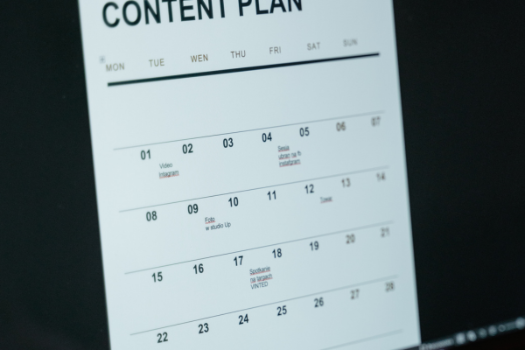.png)
Choosing the Right Content Format for Each Social Media Platform
Each social platform is different. What works on one might flop on another.
To get results, you need to match your content to the platform. That means picking the right format—images, videos, carousels, or text—that fits how people use that space.
This guide will help you choose the best content type for each major platform. No guesswork. Just clear, proven ideas to get more likes, shares, and clicks.
Let’s make sure your content not only looks good—but works hard.

1. Understanding What Each Platform Likes
Every platform has its own style.
Instagram loves eye-catching visuals. Reels, Stories, and clean image grids do great here.
TikTok runs on short, vertical videos with trends, humor, or tips.
LinkedIn is where people go for work insights. Text posts, articles, and expert advice work well.
Facebook is more flexible. Videos, images, event posts, and polls all have a place.
Twitter is fast and short. Text, links, and real-time updates win.
Pinterest is visual and educational. Pins with how-tos or infographics do best.

Knowing what each platform is built for helps you share the right type of content at the right time.
2. Images vs. Video: What Works Best Where
Both images and videos can work well. The key is knowing where they shine.
Use images for:
- Instagram grids and carousels
- Facebook product posts
- Pinterest boards

Go with videos on:
- TikTok (short and fun)
- Instagram Reels (quick tips or behind-the-scenes)
- Facebook and LinkedIn (story-driven or helpful content)
Video often brings more engagement. But images are quicker to create and still powerful when done well.
Try both. Watch your metrics. Then do more of what your audience responds to.
3. Writing Captions That Fit the Platform
Good copy makes great content better.
On Instagram, keep it short or go deep. Both work. Add a call-to-action at the end.
On LinkedIn, write longer, thoughtful captions. Share personal wins or helpful lessons.
On Facebook, tell stories. Ask questions to spark comments.
On Twitter, be snappy. Use one strong line. Add a second for context if needed.
Use emojis if they match your voice. Use hashtags—but not too many. Three to five is plenty.
No matter the platform, keep it real. Talk like a human. Not a brand.
4. Using Features Like Stories, Polls, and Lives
Beyond posts, each platform has features to boost engagement.
Stories (on IG, Facebook, and LinkedIn) are great for quick updates, behind-the-scenes, or polls.
Polls work well on Instagram Stories, LinkedIn posts, or Twitter. They’re fast to answer and easy to share.
Live video connects directly. Use it to host Q&As, share events, or give tutorials.
Try using these weekly to stay active without always posting to the grid.
Interactive tools help you show up more often—and feel more real.
5. Keeping Content Consistent Across Platforms
You don’t need brand-new content for every platform. But you do need to adapt it.
Start with one post idea. Then shape it:
- A short Reel for Instagram
- A carousel on LinkedIn
- A quote card for Twitter

Keep your voice the same. Stick to your colors and tone. But adjust how you share the message.
Also, stagger your posts. Don’t post the same thing on every platform at the same time. Spread it out.
Consistency builds recognition. Repurposing saves time. Together, they help you grow without burning out.
Conclusion
Choosing the right content format isn’t guesswork—it’s strategy.
Each platform has its own rhythm, tools, and audience. Match your format to those, and you’ll get better results with less effort.
Start small. Focus on one or two platforms. Test what works. Then expand.
And remember: Good content connects. Great content fits the platform too.
Let your message lead—and let the format help it land.